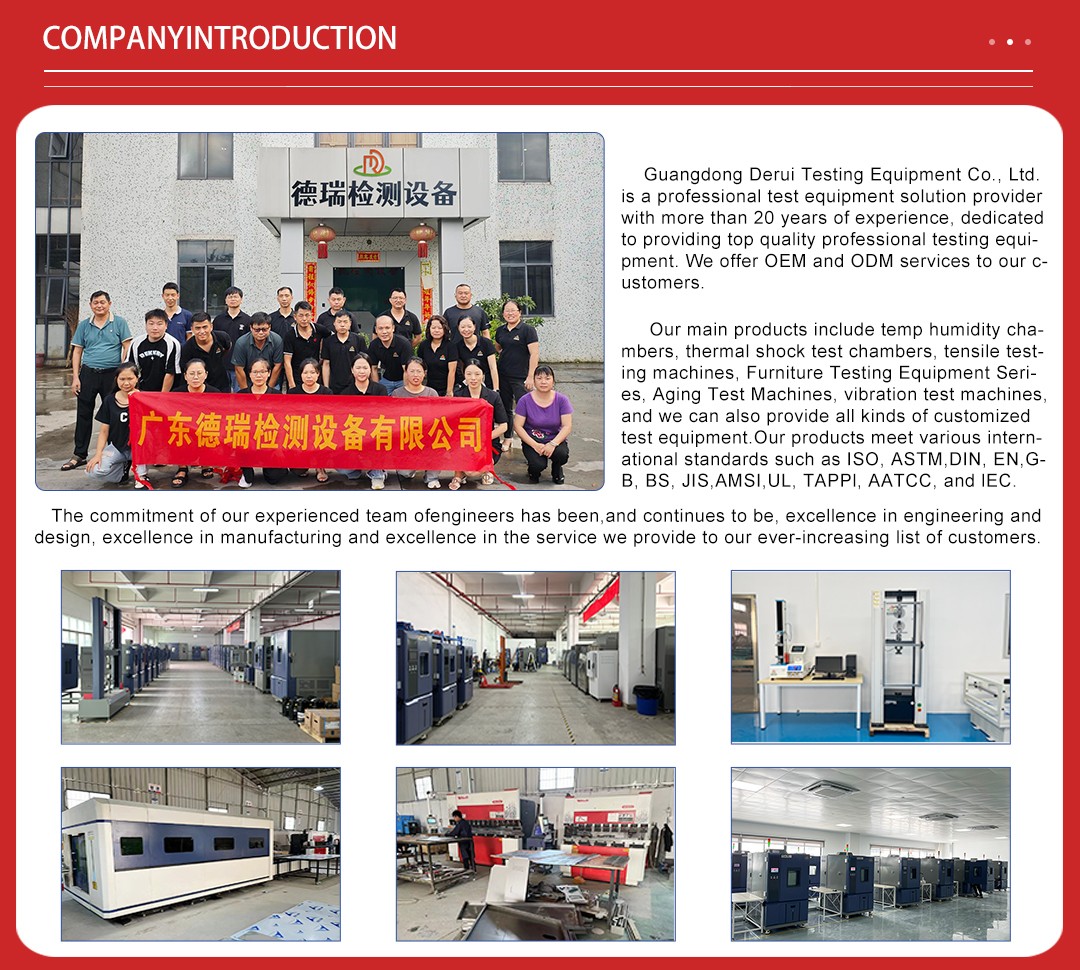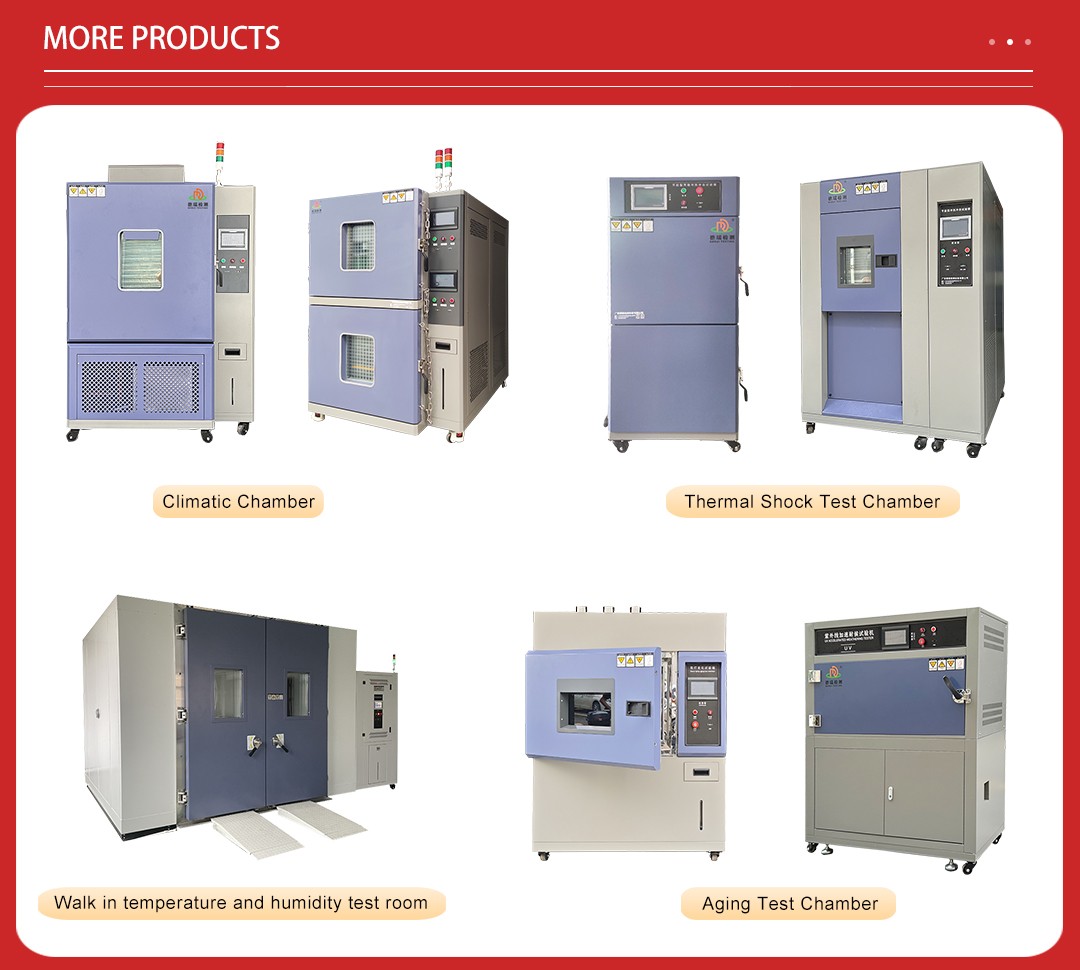
The Ultraviolet (UV) Accelerated Aging Chamber is a sophisticated testing device designed to simulate and accelerate the aging process of coatings and paints under controlled UV light exposure. This ...

The Ultraviolet (UV) Accelerated Aging Chamber is a sophisticated testing device designed to simulate and accelerate the aging process of coatings and paints under controlled UV light exposure. This equipment is essential for evaluating how these materials will perform over time when exposed to sunlight, which can cause degradation, fading, chalking, cracking, and loss of adhesion. By providing a controlled environment that mimics natural weathering conditions, the UV chamber helps manufacturers and researchers ensure the long-term durability and aesthetic quality of their products.

- Automotive Industry: Evaluates the durability and appearance of automotive paints and coatings, ensuring they can withstand prolonged exposure to sunlight and harsh weather conditions.
- Construction and Architecture: Tests the longevity and protective properties of architectural coatings, sealants, and waterproofing materials used in building exteriors.
- Consumer Goods: Assesses the colorfastness and resistance of coatings on household appliances, furniture, and electronic devices.
- Marine and Offshore: Simulates the extreme environmental conditions faced by marine coatings and paints, ensuring they can protect vessels and offshore structures from corrosion and UV damage.
- Aerospace: Evaluates the performance of aerospace coatings and paints in high-altitude and extreme temperature environments, ensuring they meet stringent durability and safety standards.
- Industrial Applications: Tests the resistance of industrial coatings and paints to UV radiation, chemicals, and mechanical stress, ensuring they provide long-lasting protection in demanding environments.

The operation of UV accelerated aging chambers should adhere to relevant international and industry-specific standards, including:
ISO 4892-2: Plastics – Methods of exposure to laboratory light sources – Part 2: Xenon-arc lamps
ASTM G154: Standard Practice for Operating Fluorescent Light Apparatus for UV Exposure of Nonmetallic Materials
ASTM G155: Standard Practice for Operating Xenon Arc Light Apparatus for Exposure of Nonmetallic Materials
SAE J2527: Accelerated Exposure of Automotive Exterior Materials Using Xenon-Arc Devices
GB/T 16422.2: Plastics – Methods of exposure to laboratory light sources – Part 2: Xenon-arc lamps (Chinese National Standard)
ISO 11341: Paints and varnishes – Artificial weathering reference exposures using xenon-arc apparatus

Working Principle and Technical Foundation
- Accelerated Aging: Based on the Arrhenius equation and acceleration factor (AF) theory, the chamber accelerates the aging process by increasing the intensity of UV light and environmental stresses. This allows researchers to predict long-term performance within a much shorter timeframe.
- Modular Design: Offers flexible configurations to accommodate different sample sizes and shapes, making it suitable for a wide range of plastic products, from small components to large panels.

Item | Specification |
Chamber dimension (W*D*H) | 1300*500*1460mm |
Chamber material | SUS#304 stainless steel |
Temperature range | RT to 70℃ |
Temperature fluctuation | ≤±1.0℃ |
Temperature uniformity | 3℃ |
Humidity range: | ≥75%RH |
Controller | Programmable controller, LCD touch screen |
Control mode | Balance temperature humidity control (BTHC) |
Test cycle setting | Exposure, condensation and water spray test cycle is programmable |
Water spray cycle | Spray 18mins in every 120mins / spray 12mins in every 60mins |
Water usage | 8L/day |
Distance from sample to lamp | 55±2mm |
Centre distance between lamps | 65~70mm |
Irradiance range | 0.45~0.90W/m2 |
UV lamps | Imported Atlas UV-A: 315-400nm (8pcs, 1600h lifetime) |
Lamp power | 40W/Piece |
Specimen Size | 75×290mm (24pcs) / 75x150mm (48pcs), maximum thickness 5mm |
Testing time | 0~999H, adjustable |
Protection system | Overload short circuit protection Over temperature protection Water lacking protection Earth leakage protection Auto shut off protection |

- Brand Reputation and Support: Opt for a reputable manufacturer with a strong track record of quality and reliability. Ensure the supplier offers excellent customer service, technical support, and after-sales maintenance.
- Safety Precautions: Always follow safety protocols, including wearing appropriate protective gear when handling UV lamps and chemicals. Ensure the chamber is properly grounded and that all safety features are functioning correctly.
By utilizing a UV aging test chamber, manufacturers and researchers can gain critical insights into the long-term performance of plastic materials, enabling them to develop more durable and reliable products that stand the test of time.


Not search wanted products